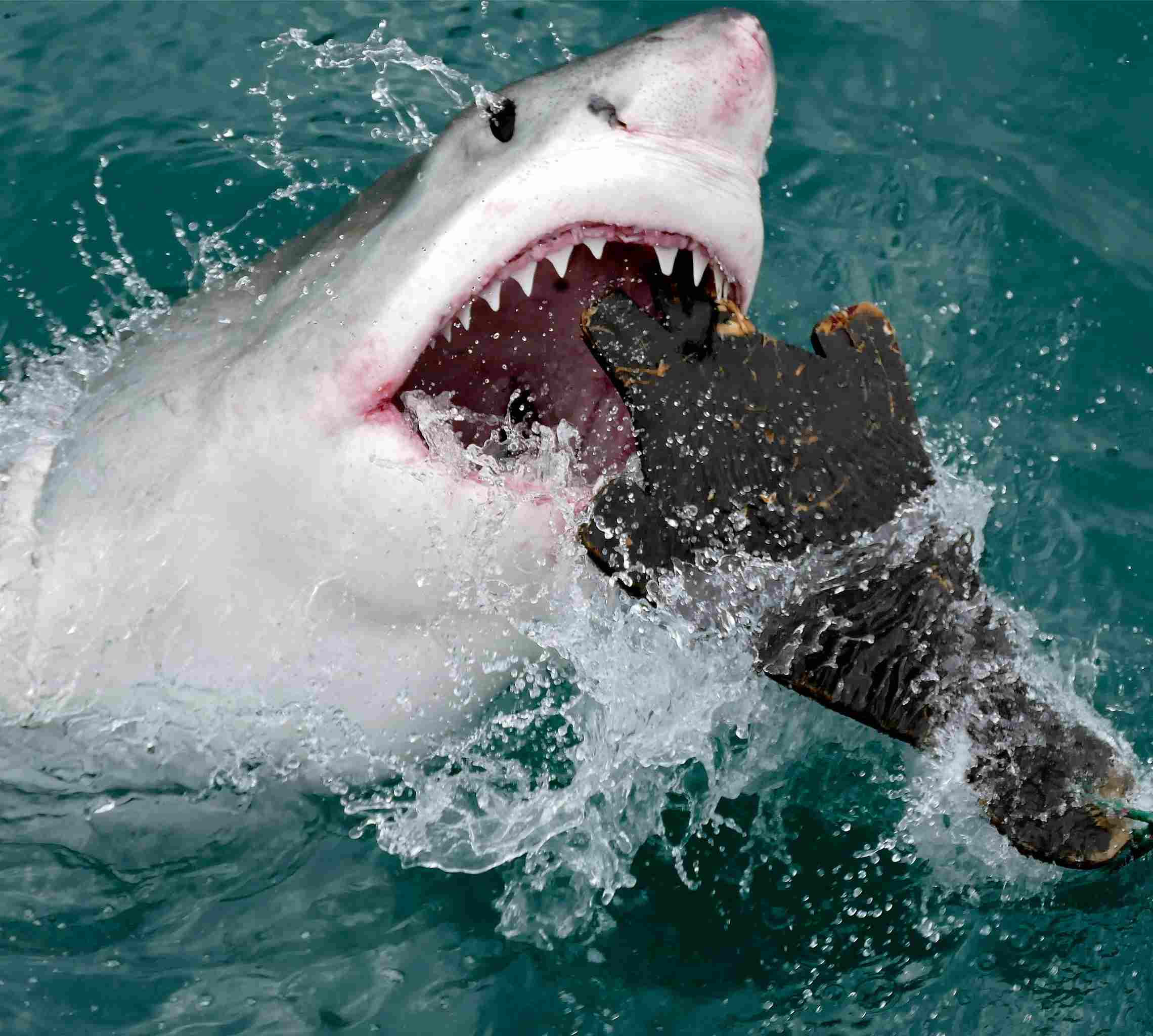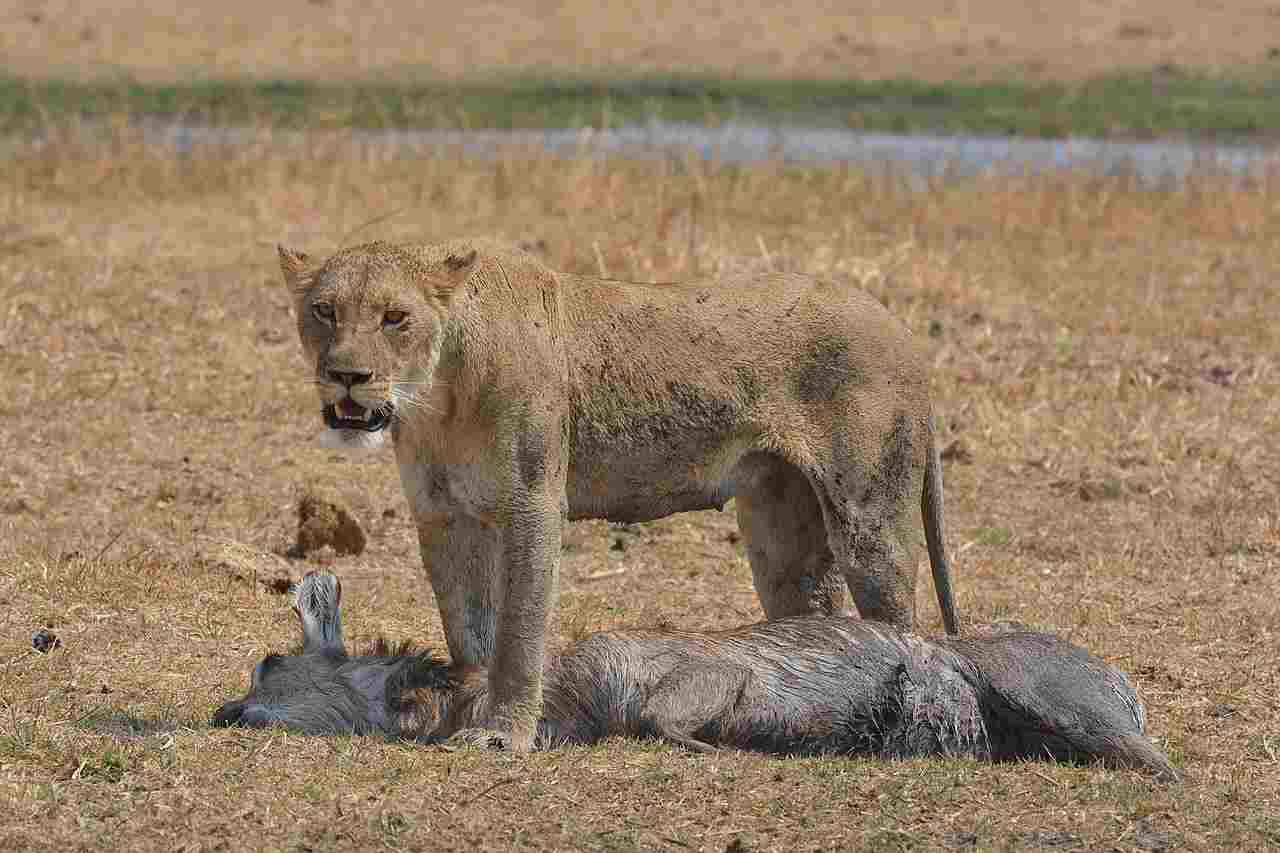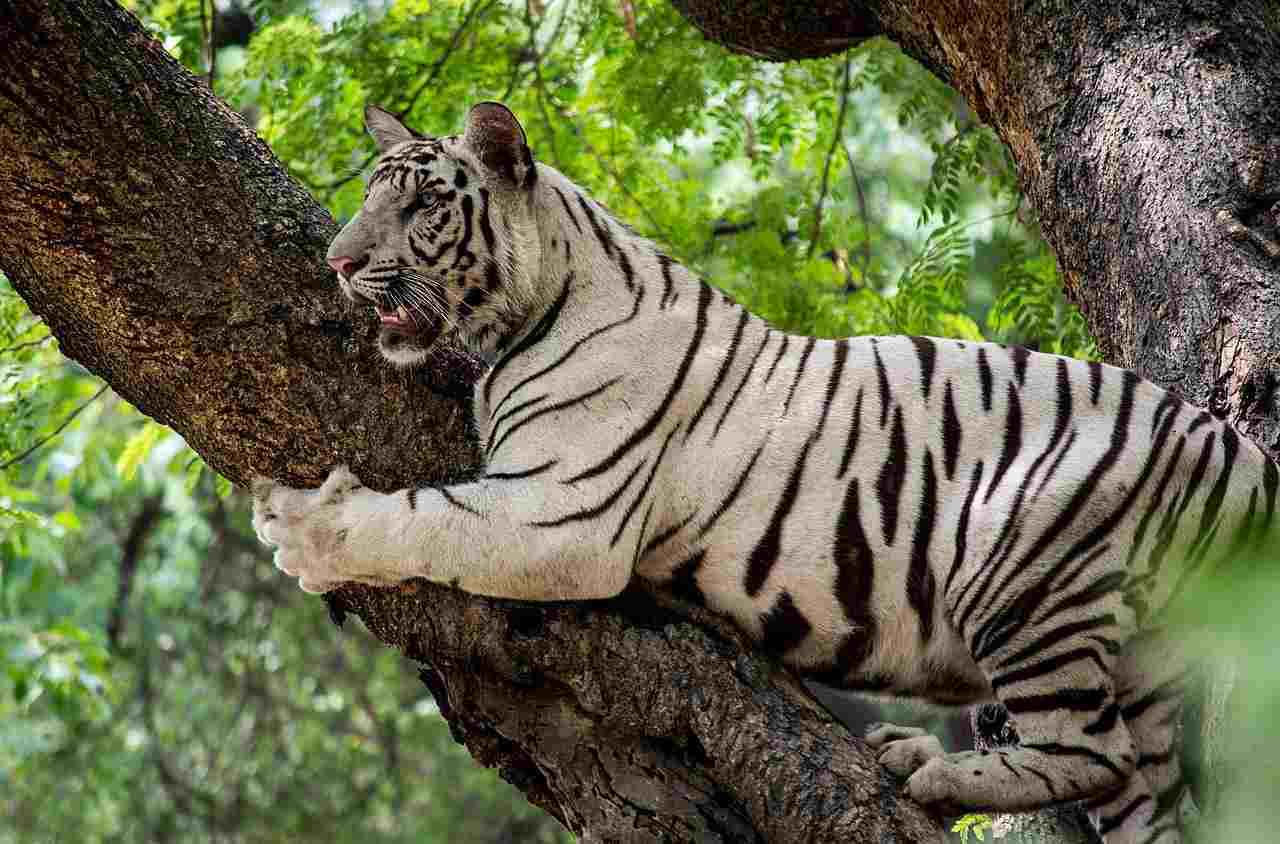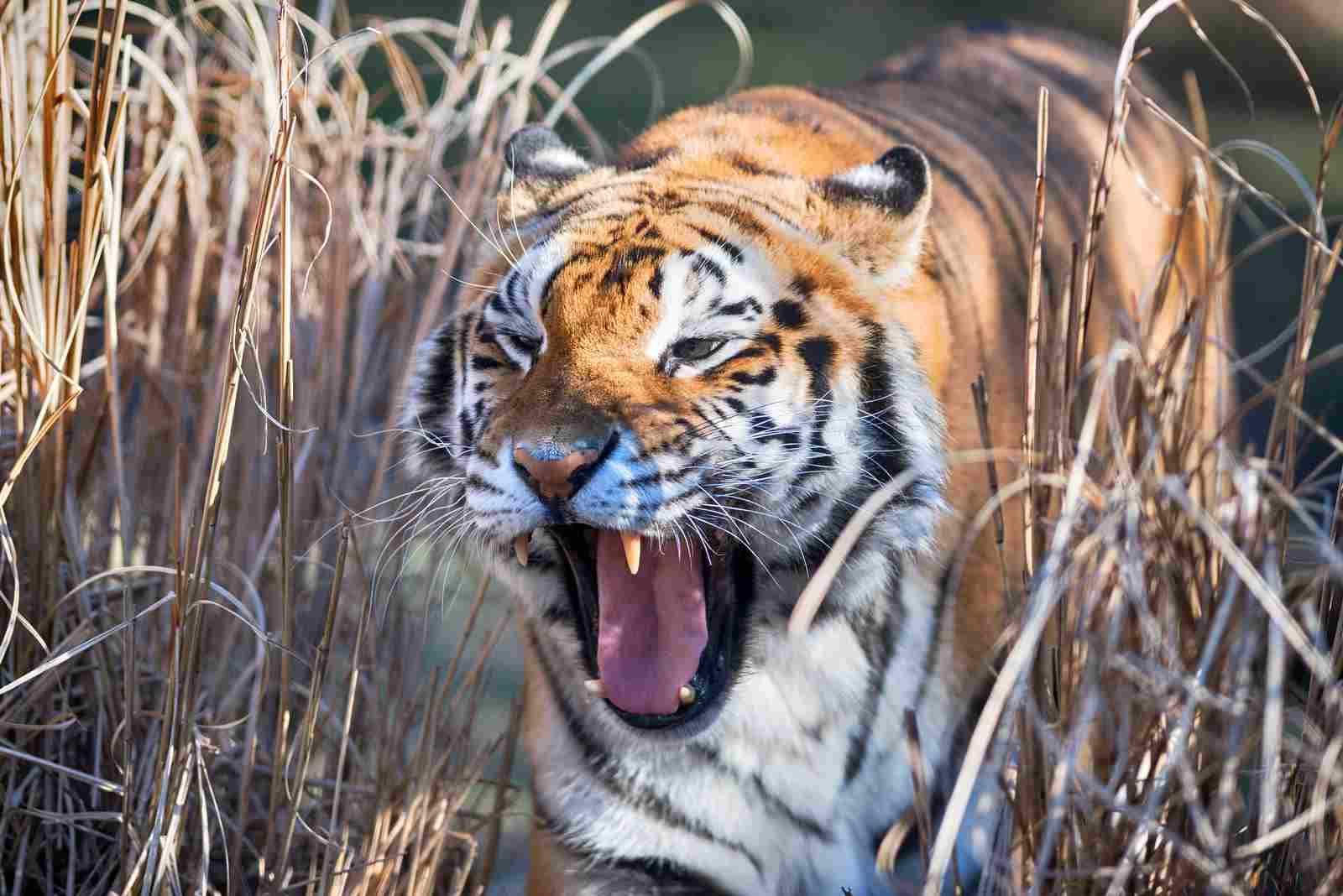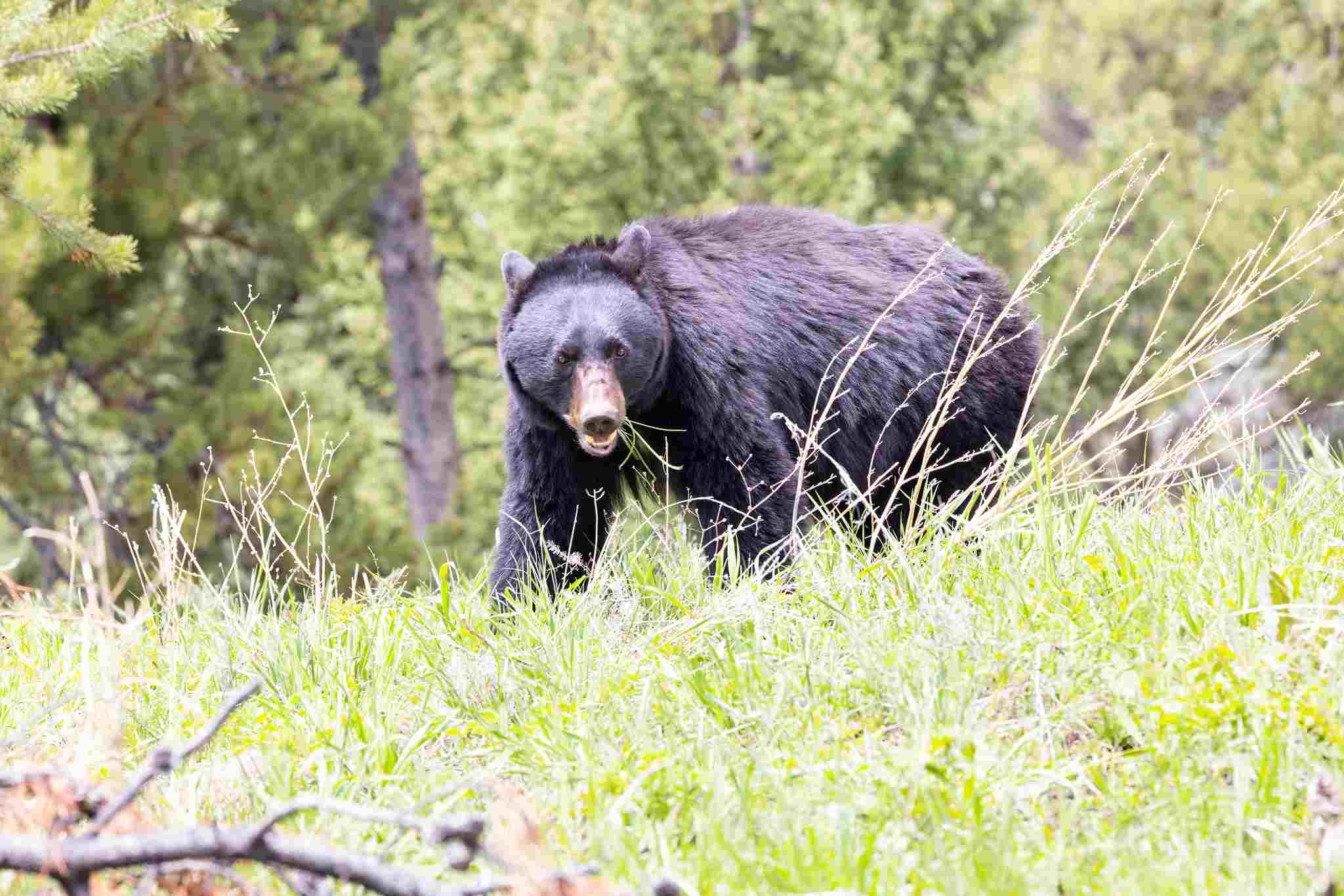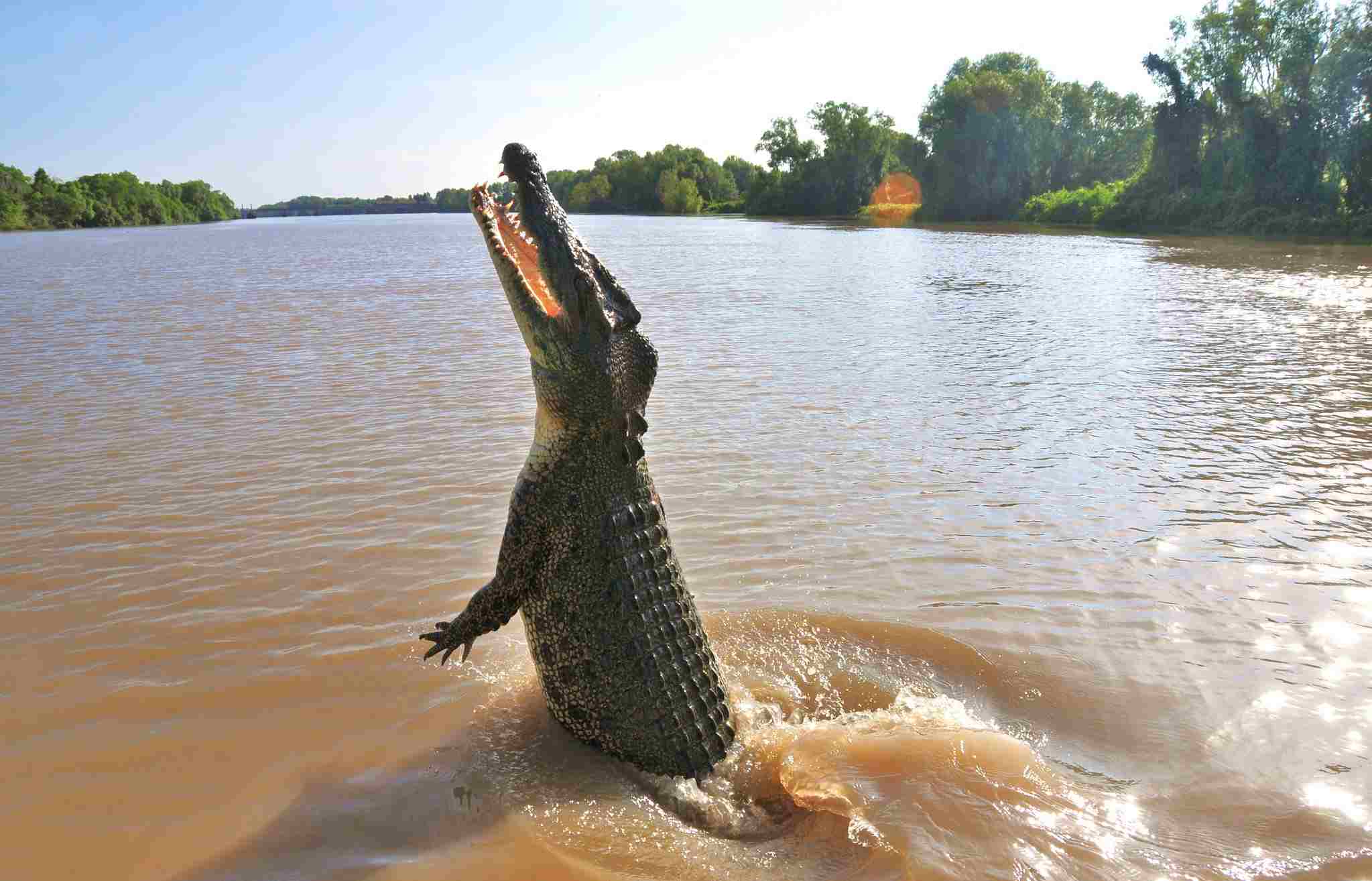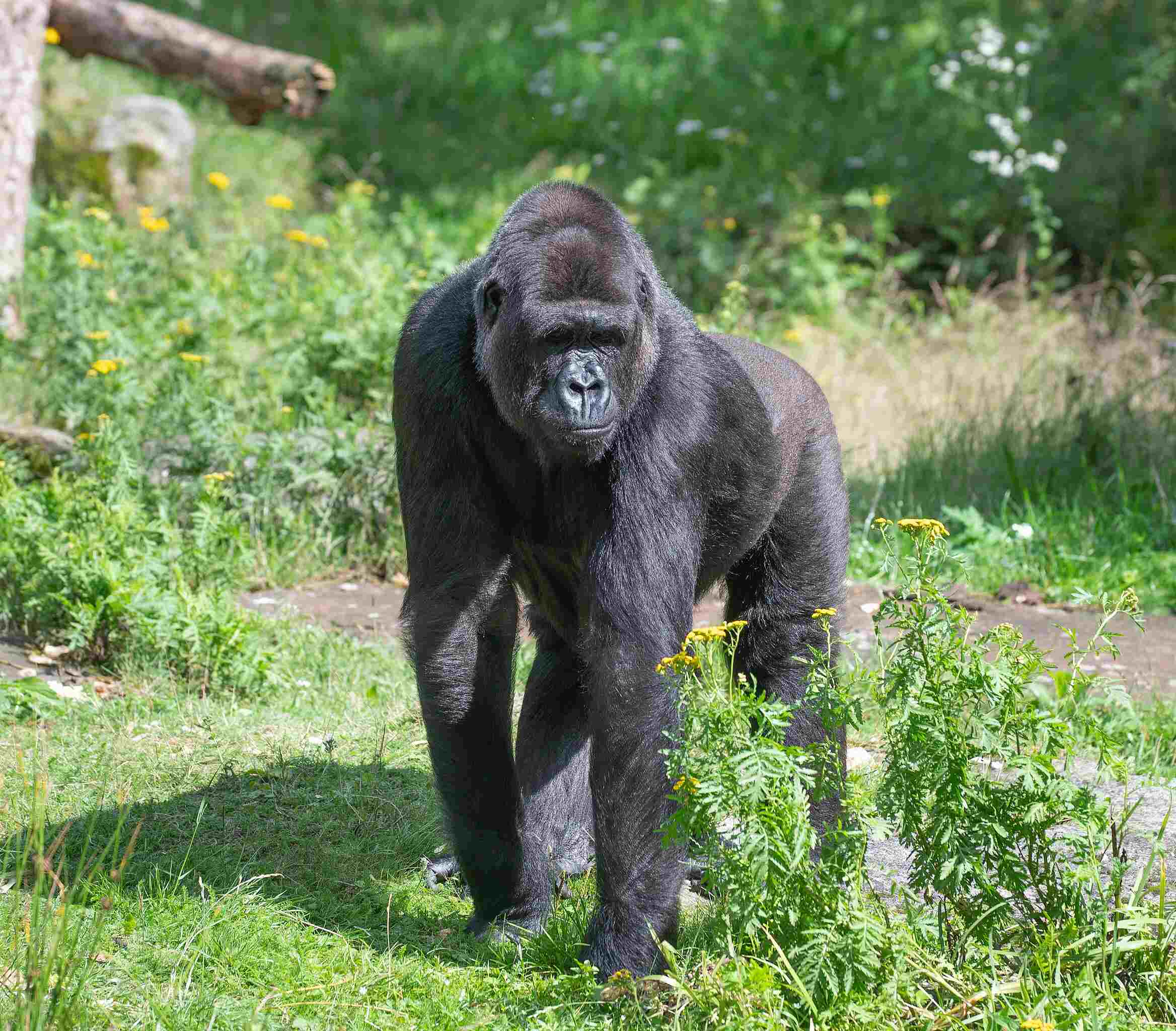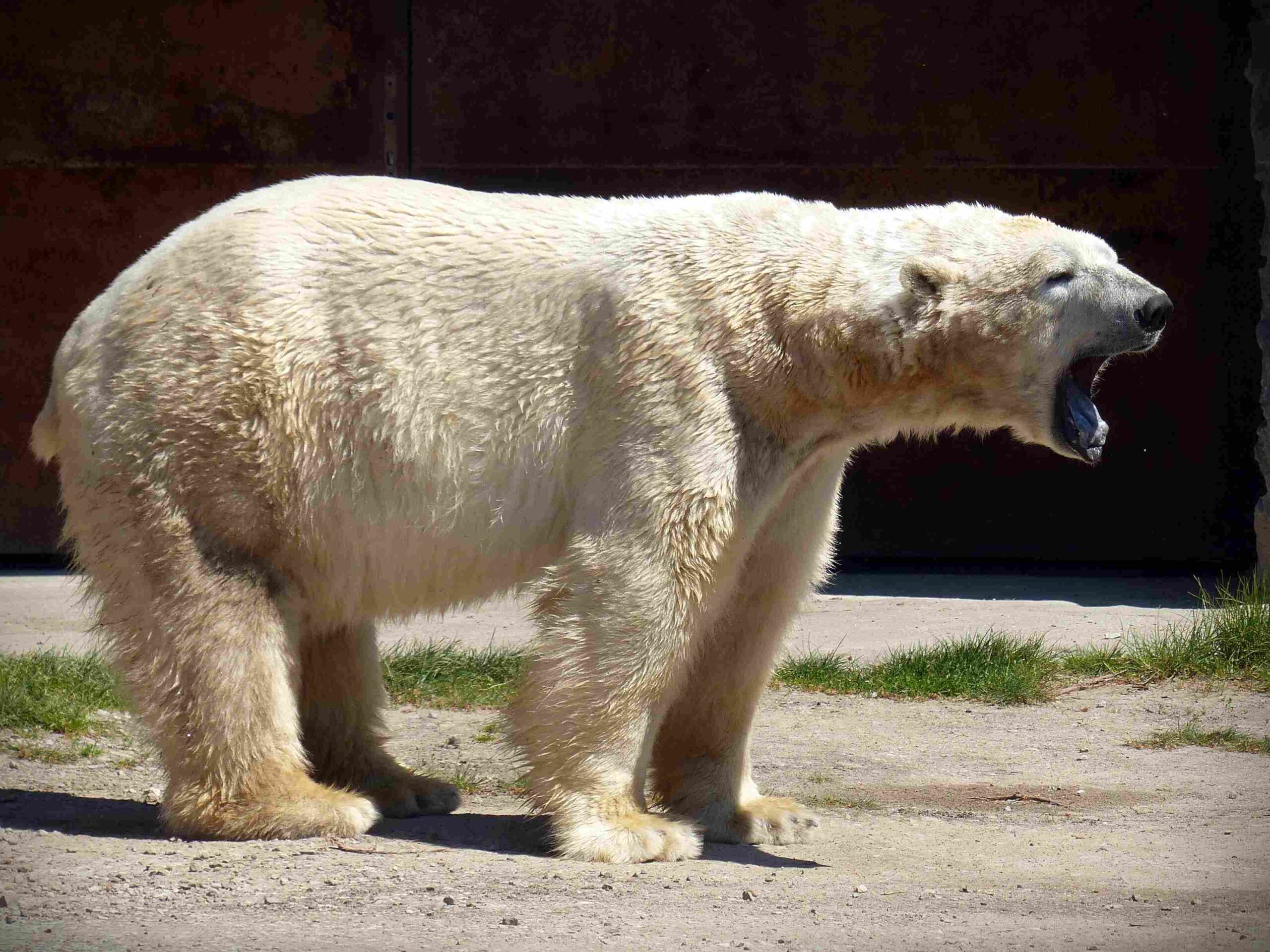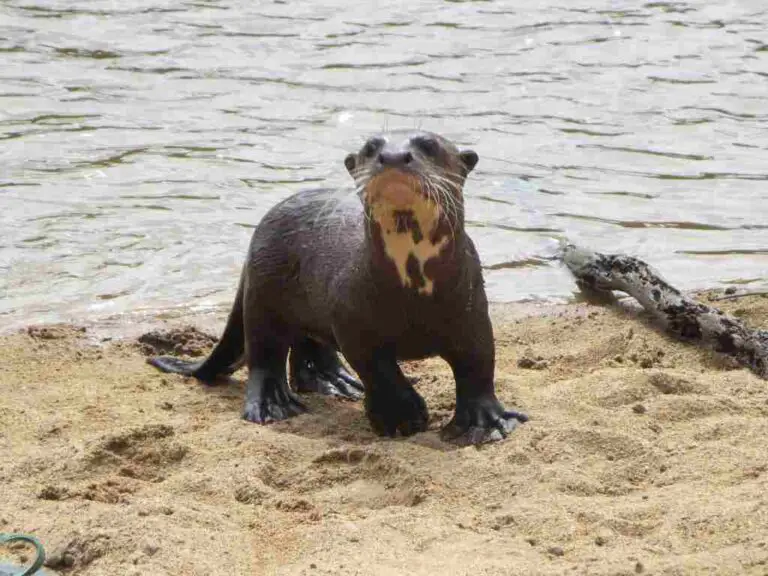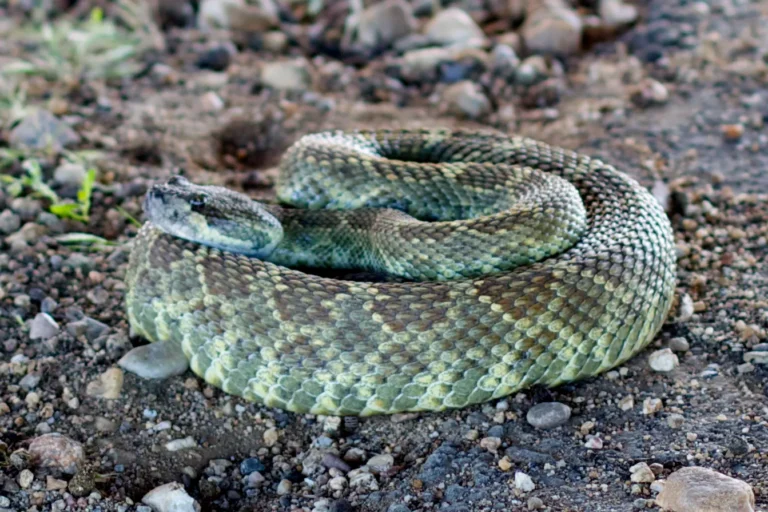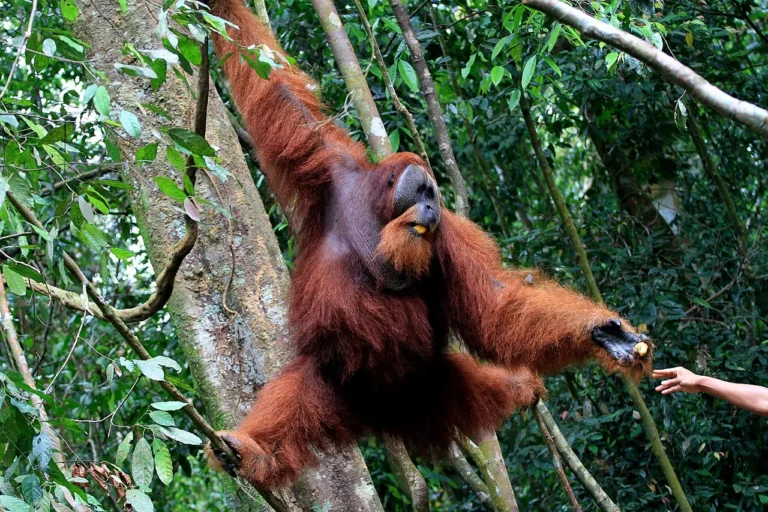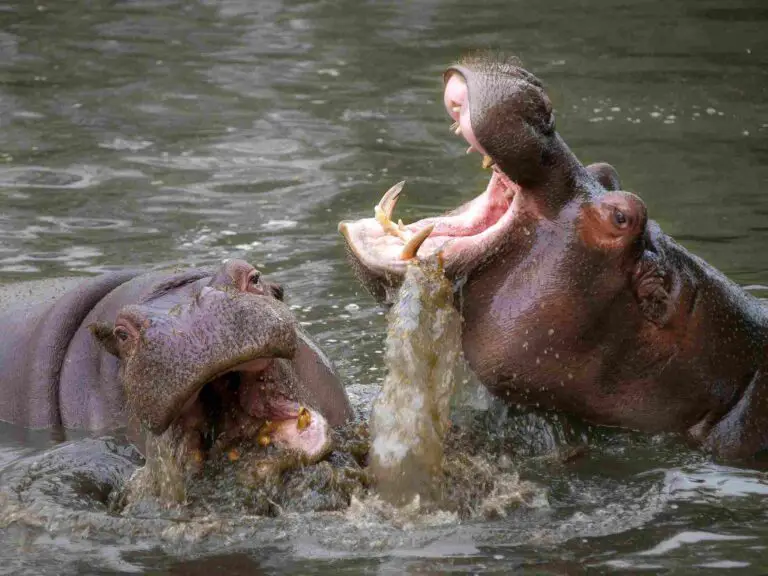Top 10 Predators In The World And Their Characteristics
The top 10 predators in the world include the orca, great white shark, polar bear, grizzly bear, saltwater crocodile, tiger, lion, jaguar, leopard, and eagle. These apex predators are formidable hunters, each uniquely adapted to their environment, whether it’s the ocean, forest, savanna, or sky. They play crucial roles in maintaining ecological balance by controlling prey populations and contributing to biodiversity. However, many of these predators face significant threats from habitat loss, climate change, poaching, and human-wildlife conflict, requiring ongoing conservation efforts to ensure their survival.
1. Orca
The orca, or killer whale (Orcinus orca), is a highly intelligent and versatile predator that dominates the marine environment. Found in oceans worldwide, these apex predators are known for their striking black-and-white coloration and sophisticated social structures. Orcas are the largest members of the dolphin family and can grow to lengths exceeding 30 feet. They have a diverse diet, which varies by region and pod, and includes fish, squid, seals, sea birds, and even larger whales. Orcas are known to employ complex hunting techniques, often hunting in groups or “pods,” where they use coordinated strategies to catch their prey.
These marine predators are renowned for their intelligence and adaptability. Orcas use echolocation to locate prey and can communicate with complex vocalizations, each pod having its own unique set of calls. This combination of intelligence, social cooperation, and hunting prowess makes them one of the most formidable predators in the ocean. Additionally, orcas are known for their stunning acrobatics, which not only serve to impress spectators but also play a role in hunting and social interaction within pods. Despite their fearsome reputation, they are generally not a threat to humans in the wild, with incidents typically occurring in captivity.
2. Great White Shark
The great white shark (Carcharodon carcharias) is one of the most iconic and feared predators in the ocean. Known for their size, power, and hunting skills, great whites can grow up to 20 feet in length and weigh over 5,000 pounds. They are found in coastal regions across the globe and are apex predators, with a diet consisting of fish, seals, sea lions, and other marine mammals. Great whites use their keen sense of smell, powerful jaws, and agility to locate and capture prey, often ambushing from below with incredible speed.
Despite their fearsome reputation, great white sharks are not the indiscriminate killers often portrayed in popular culture. They play a crucial role in maintaining the health of marine ecosystems by controlling the populations of their prey species and preventing overgrazing of vital habitats. Great whites are solitary creatures but may occasionally gather in areas with abundant food sources. Their interactions with humans are rare, and most attacks are cases of mistaken identity, with sharks confusing surfers or swimmers with their typical prey.
3. Polar Bear
The polar bear (Ursus maritimus) is the largest land carnivore and a top predator in the Arctic region. These massive bears are uniquely adapted to their harsh environment, with thick fur and a layer of blubber that insulates them from the cold. Polar bears primarily hunt seals, using their keen sense of smell to locate breathing holes in the ice. They are excellent swimmers, capable of covering long distances to find food and ice platforms for hunting and resting.
Polar bears are solitary by nature, with males and females typically coming together only for mating and cub-rearing. As Arctic sea ice continues to shrink due to climate change, polar bears face increasing challenges in finding food, leading to a decline in their population. This has prompted conservation efforts to protect their habitats and mitigate the impacts of climate change. Despite their formidable size and strength, polar bears are vulnerable to environmental changes and human activity, underscoring the importance of preserving the Arctic ecosystem.
4. Grizzly Bear
Grizzly bears (Ursus arctos horribilis) are powerful and versatile predators found in North America, particularly in Alaska, western Canada, and the northwestern United States. With their muscular build, large claws, and sharp teeth, grizzlies are formidable predators, capable of hunting large prey like moose and deer. However, they are also opportunistic feeders, eating a varied diet that includes berries, roots, fish, and small mammals. Grizzly bears are known for their strength and aggression, especially when defending their territory or cubs.
Despite their fearsome reputation, grizzly bears play a crucial role in maintaining the health of forest ecosystems. They disperse seeds through their droppings, aerate the soil with their digging, and help regulate the populations of prey species. Grizzlies are typically solitary, with males and females meeting only to mate. Human activities, such as habitat destruction and encroachment, have led to conflicts between grizzlies and humans, resulting in conservation efforts to protect both bear populations and human communities.
5. Saltwater Crocodile
The saltwater crocodile (Crocodylus porosus), also known as the “salty,” is the largest and most aggressive crocodilian species. Found in coastal regions and river systems across Southeast Asia and northern Australia, saltwater crocodiles can grow up to 23 feet in length and weigh over 2,000 pounds. They are apex predators with a diverse diet that includes fish, birds, reptiles, and mammals. Their powerful jaws, strong tails, and ability to remain submerged for extended periods make them effective hunters, capable of ambushing prey from the water’s edge.
Saltwater crocodiles are known for their territoriality and aggressive behavior, often defending their territory from intruders, including humans. Despite their fearsome demeanor, they are an essential part of their ecosystems, helping control prey populations and maintain the health of aquatic habitats. Conservation efforts have helped stabilize saltwater crocodile populations, though human-crocodile conflicts remain a concern in some regions. Education and safety measures are crucial to reducing these conflicts and promoting coexistence with these formidable predators.
6. Tiger
The tiger (Panthera tigris) is the largest of the big cats and one of the most iconic predators in the world. Found across Asia, tigers inhabit a range of environments, from dense forests to grasslands. Their distinctive orange fur with black stripes serves as camouflage while stalking prey. Tigers are solitary hunters, using their powerful bodies, keen senses, and stealth to ambush prey such as deer, boars, and buffalos. A tiger’s strength and agility allow it to take down animals much larger than itself, making it an apex predator in its environment.
Tigers play a vital role in their ecosystems by maintaining a balance among prey species and supporting forest health. Despite their majestic presence, tigers face significant threats from habitat loss, poaching, and human-wildlife conflict. Conservation efforts are crucial for their survival, focusing on protecting habitats, reducing poaching, and promoting coexistence with local communities. The decline in tiger populations has led to international initiatives to preserve this magnificent species and its natural habitats.
7. Lion
The lion (Panthera leo) is known as the “king of the jungle,” though it primarily inhabits savannas and grasslands in Africa. Lions are unique among big cats for their social structure, living in groups called prides, which typically consist of related females, their cubs, and a small number of males. This social structure allows lions to hunt cooperatively, often targeting large ungulates such as wildebeest, zebras, and buffalos. Lions are formidable predators, known for their strength, speed, and teamwork, making them apex predators in their ecosystems.
Despite their majestic status, lions face numerous threats, including habitat loss, human-wildlife conflict, and poaching. The decline in their population has led to focused conservation efforts to ensure their survival in the wild. Lions play a critical role in maintaining the balance of their ecosystems by controlling prey populations and preventing overgrazing. Efforts to preserve lions involve habitat restoration, anti-poaching measures, and community-based conservation to reduce conflicts with humans.
8. Jaguar
The jaguar (Panthera onca) is the largest big cat in the Americas and a top predator in its range, which extends from Mexico to Argentina. Jaguars are solitary animals with a reputation for strength and power, capable of taking down large prey such as deer, capybaras, and even caimans. They are skilled swimmers, often hunting along riverbanks and wetlands, and are known for their distinctive golden coat with black rosettes. Jaguars use a combination of stealth, strength, and agility to stalk and ambush their prey, making them formidable predators.
Jaguars play a vital role in maintaining the health of tropical ecosystems, but they face significant threats from habitat loss and fragmentation, as well as human-wildlife conflict. Conservation efforts aim to protect jaguar habitats, create wildlife corridors, and mitigate conflicts with human activities. These initiatives are crucial for preserving jaguar populations and the ecosystems they inhabit. The jaguar’s cultural significance in indigenous cultures also contributes to its importance in conservation efforts.
9. Leopard
The leopard (Panthera pardus) is one of the most adaptable and widespread of the big cats, found across Africa and parts of Asia. Leopards are known for their agility, stealth, and versatility, enabling them to thrive in various environments, from dense forests to savannas and urban outskirts. With their distinctive rosettes on a golden coat, leopards are excellent climbers and often carry their prey into trees to avoid scavengers. They are solitary hunters, using stealth and surprise to capture a wide range of prey, from small mammals to large ungulates.
Leopards are apex predators that play an important role in controlling prey populations and maintaining ecosystem balance. However, they face threats from habitat loss, poaching, and human-wildlife conflict, particularly in areas with expanding human settlements. Conservation efforts focus on preserving habitats, creating wildlife corridors, and reducing conflicts with humans. Leopards’ adaptability gives them a survival advantage, but ongoing conservation measures are needed to ensure their long-term survival in the wild.
10. Eagle
Eagles are large birds of prey found worldwide, known for their keen eyesight, powerful talons, and impressive wingspans. These raptors are apex predators in their ecosystems, capable of hunting a variety of prey, from small mammals to fish and birds. Eagles typically nest in high locations like cliffs or tall trees, providing them with a strategic vantage point for hunting. Their sharp vision allows them to spot prey from great distances, and their strong talons enable them to capture and carry off their catch.
Eagles play a crucial role in maintaining ecological balance by controlling populations of smaller animals and scavenging on carrion, helping to clean the environment. However, they face threats from habitat loss, pollution, and hunting. Conservation efforts focus on protecting their habitats, reducing exposure to toxins like lead and pesticides, and enforcing laws against illegal hunting. Eagles’ majestic presence and cultural significance make them symbols of strength and freedom, contributing to their appeal and the importance of preserving them in the wild.
*Summary
-
Orca
-
Known as killer whales; apex predators in oceans worldwide.
-
Highly intelligent with complex social structures.
-
Use echolocation and coordinated hunting strategies.
-
Have a diverse diet, including fish, seals, and even larger whales.
-
Generally not a threat to humans in the wild; incidents occur in captivity.
-
-
Great White Shark
-
Iconic apex predator in coastal regions; known for size, power, and hunting skills.
-
Can grow up to 20 feet in length and weigh over 5,000 pounds.
-
Ambush predators with a diet including fish and marine mammals.
-
Rare interactions with humans; most attacks are due to mistaken identity.
-
Play a crucial role in maintaining marine ecosystems.
-
-
Polar Bear
-
Largest land carnivore; top predator in the Arctic.
-
Adapted to cold environments with thick fur and blubber.
-
Primarily hunt seals; excellent swimmers.
-
Face threats from climate change and habitat loss.
-
Conservation efforts focus on protecting habitats and mitigating climate change impacts.
-
-
Grizzly Bear
-
Found in North America; known for strength and aggression.
-
Diet is varied; can hunt large prey but also eats berries and fish.
-
Plays a role in maintaining forest ecosystems through seed dispersal and soil aeration.
-
Conflicts with humans due to habitat loss and encroachment.
-
Conservation efforts aim to reduce human-bear conflicts and protect bear populations.
-
-
Saltwater Crocodile
-
Largest and most aggressive crocodilian species; found in Southeast Asia and northern Australia.
-
Apex predators with diverse diets, including fish and mammals.
-
Known for territoriality and aggressive behavior; capable of ambushing prey.
-
Play a role in maintaining aquatic ecosystems; conservation efforts aim to reduce human-crocodile conflicts.
-
-
Tiger
-
Largest of the big cats; apex predator found across Asia.
-
Solitary hunter with distinctive orange fur and black stripes.
-
Hunts a range of prey, from deer to buffalo.
-
Faces significant threats from habitat loss and poaching.
-
Conservation efforts focus on protecting habitats and reducing human-wildlife conflicts.
-
-
Lion
-
Known as the “king of the jungle”; lives in social groups called prides.
-
Inhabits savannas and grasslands; hunts cooperatively.
-
Targets large ungulates like wildebeest and buffalo.
-
Faces threats from habitat loss, poaching, and human-wildlife conflict.
-
Conservation efforts focus on habitat restoration and anti-poaching measures.
-
-
Jaguar
-
Largest big cat in the Americas; found from Mexico to Argentina.
-
Known for strength and power; capable of hunting large prey.
-
Skilled swimmers; often hunt along riverbanks.
-
Faces threats from habitat loss and fragmentation, as well as human-wildlife conflict.
-
Conservation efforts aim to protect jaguar habitats and create wildlife corridors.
-
-
Leopard
-
Most adaptable and widespread of the big cats; found in Africa and Asia.
-
Agile and versatile; excellent climbers; carry prey into trees.
-
Solitary hunters with a varied diet.
-
Faces threats from habitat loss, poaching, and human-wildlife conflict.
-
Conservation efforts focus on preserving habitats and creating wildlife corridors.
-
-
Eagle
-
Large birds of prey found worldwide; apex predators with keen eyesight and powerful talons.
-
Hunt a variety of prey, from small mammals to fish and birds.
-
Play a crucial role in maintaining ecological balance.
-
Face threats from habitat loss, pollution, and illegal hunting.
-
Conservation efforts focus on protecting habitats and reducing exposure to toxins.
-
| Predator |
Characteristics & Conservation Issues
|
| Orca |
Apex marine predator; highly intelligent; complex social structures; coordinated hunting strategies; diverse diet; conservation focused on captivity and wild populations.
|
| Great White Shark |
Coastal apex predator; large size and power; diet includes fish and marine mammals; rare human interactions; vital for marine ecosystem balance.
|
| Polar Bear |
Largest land carnivore; adapted to Arctic environments; primarily hunts seals; faces threats from climate change and habitat loss; conservation efforts for habitat protection.
|
| Grizzly Bear |
Strong and aggressive North American predator; varied diet; plays role in forest ecosystem health; conflicts with humans due to habitat loss; conservation aims to reduce conflicts.
|
| Saltwater Crocodile |
Largest crocodilian; found in Southeast Asia and northern Australia; territorial and aggressive; diverse diet; conservation efforts to reduce human-crocodile conflicts.
|
| Tiger |
Largest big cat; found across Asia; solitary hunter with distinctive stripes; faces habitat loss and poaching; conservation focuses on protecting habitats and reducing human-wildlife conflicts.
|
| Lion |
Social big cat in prides; hunts cooperatively; found in African savannas and grasslands; faces habitat loss, poaching, and human-wildlife conflict; conservation aims at habitat restoration and anti-poaching.
|
| Jaguar |
Largest big cat in the Americas; skilled swimmer; solitary hunter; faces habitat loss and human-wildlife conflict; conservation efforts focus on habitat protection and wildlife corridors.
|
| Leopard |
Widespread and adaptable big cat; agile climber; varied diet; faces threats from habitat loss, poaching, and human-wildlife conflict; conservation aims at preserving habitats and creating wildlife corridors.
|
| Eagle |
Apex bird of prey; keen eyesight and powerful talons; variety of prey; vital for ecological balance; faces threats from habitat loss, pollution, and illegal hunting; conservation efforts aim to protect habitats and reduce toxins.
|
